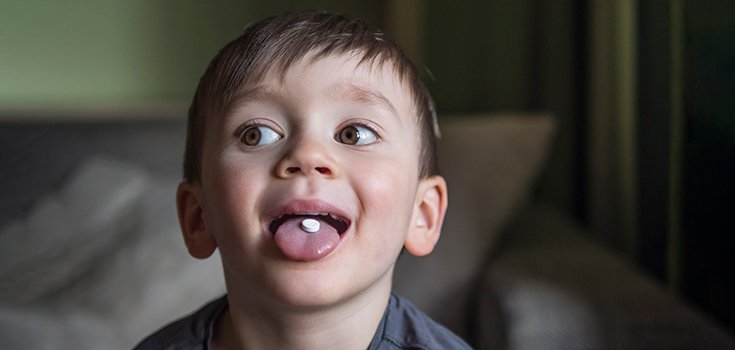Poison Control Centers Alarmed over ADHD Med Overdoses

A report released in May shows that in a span of 15 years, calls to poison control centers concerning children being unnecessarily exposed to attention-deficit hyperactivity disorder (ADHD) drugs increased by 60%. But that number could actually be much higher, because the study did not include emergency room visits or those who didn’t seek medical attention. [1]
Overall, symptoms were reported in 28% of the cases, including agitation, irritability, increased heart rate, drowsiness, or lethargy. About 1/4 of all kids were taken to a hospital and quickly released, while just over 6% were actually admitted. [2]
The study looked at calls to U.S. poison control centers between 2000 and 2014 concerning exposures to ADHD medications in children aged 0 to 19 years. The report looked at unnecessary exposures (ingestion, inhalation, or absorption) to the drugs. Children under 13 were most likely to be unintentionally exposed, while intentional exposures increased in children over 13. [1]
Read: ADHD Meds are Screwing up Kids’ Sleep
Reports of unintentional exposures involved children – many of them very young – gaining access to improperly stored medications, as well as slightly older children who took too much or the wrong medication. The one bright spot in the report is that 3/4 of the calls, mostly involving children 12 years old or younger, didn’t result in a trip to the hospital. [3]
During the 15-year study period, the overall average increase in reports of unnecessary exposures increased 64%. However, reports increased a whopping 71% between 2000 and 2011. It dropped to 6.2% between 2011 and 2014. [1]
Lead study author Dr. Gary Smith, director of the Center for Injury Research and Policy of the Research Institute at Nationwide Children’s Hospital, says the decrease between 2011 and 2014 is still a bit of a mystery.
“We looked into FDA actions to see if they would explain the decrease, but relevant actions by the FDA occurred during the early 2000s and therefore are unlikely to be responsible for the slight decrease seen between 2011-2014.”
It’s also unclear if the trend is continuing.
Read: 1 in 5 Children are Improperly Diagnosed with ADHD
The most common reason for that exposure was found to be a therapeutic error, accounting for 41.6% of cases.
Smith adds:
“Therapeutic errors include such unintentional scenarios as taking/being given the wrong medication.”
One Reason for Over-Exposure: An Over-Prescribed Nation

The overall increases in accidental and unintentional exposures probably has a lot to do with the fact that more doctors are diagnosing ADHD and prescribing medications to treat it, according to the report. A 2012 Northwestern Medicine study shows there was a 66% increase in the number of ADHD diagnoses between 2000-2010.
Smith and other experts are deeply concerned that a portion of the reports to poison control involved teens intentionally misusing or abusing the medications, and some of those cases may have been attempted suicides. [3]
Smith says:
“They’re taking bigger doses, it’s resulting in more serious outcomes and it’s not infrequent. Looking into the motivations behind these attempted suicides would be absolutely critical.”
Another study released in May 2018 shows that rates of suicidal thoughts and actions among teens doubled between 2008 and 2015.
In addition, more and more college students are using ADHD medications to help them focus on their studies and pull those dreaded all-nighters.
Survey data from the U.S. Centers for Disease Control and Prevention (CDC) show approximately 6.1 million children between the ages of 2 and 7 were diagnosed with ADHD, as of 2016. Currently, 6 in 10 children diagnosed with ADHD take drugs to treat the disorder.
Smith said:
“As the diagnoses and treatment with medication of ADHD have increased in the U.S., these exposures have also increased, which means we really do need to pay more attention … and for different age groups, come up with different strategies to prevent them.”
He added:
“When you have these kinds of medications in the home that can cause serious side effects, they need to be kept in their containers with a child-resistant closure so that they don’t get into them.”
The study is published in the journal Pediatrics.
Sources:
[1] Newsweek
[2] CBS News
